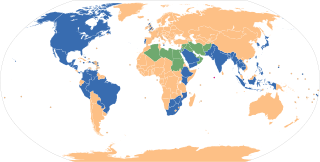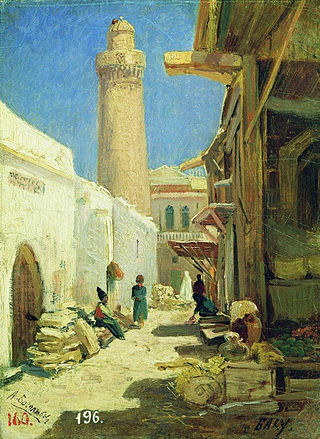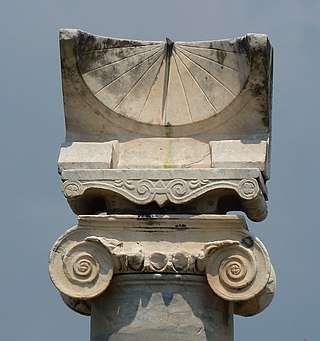
Some historical calendars had "weeks" consisting of eight days.

Some historical calendars had "weeks" consisting of eight days.
In the Burmese version of Theravada Buddhism, the week has eight days. Wednesday is divided into Wednesday proper (midnight to noon) and Rahu (noon to midnight). Each day is associated with a compass direction, a planet, and a totem animal.
The ancient Etruscans developed an eight-day market week known as the nundinum around the 8th or 7th century BC. This was passed on to the Romans no later than the 6th century BC. As Rome expanded, it encountered the seven-day week and for a time attempted to include both. The popularity of the seven-day rhythm won, and the eight-day week disappeared.
The cycle of seven days – named for the sun, the moon, and the five planets visible to the naked eye – was already customary in the time of Justin Martyr, who wrote of the Christians meeting on the Day of the Sun (Sunday). [1]
Emperor Constantine eventually established the seven-day week in the Roman calendar in AD 321. [2]
The Celts used periods of darkness such as night and winter to begin their calculations of time. This meant that the first period of time in a "week" was a night, followed by a day. Further, they also counted the ending night period, giving rise to periods of time with more nights than days. In Old Irish, the term nómad is used to signify a number of days. The usage of the term varies and there are different theories about the length of time involved, but they all involve nine periods of some kind, e.g. nine days & nights; 9 × 8 hours = 72 hours = 3 days & nights; 9 × 9 hours ~ 3½ days; 9 × 12 hours = 4½ days. [3] [4] Joseph Loth noted the frequency of the expression co cend nomaide (“to the end of a nómad”) in the literature—sometimes replaced by nóilaíthe (“nine days”)—and how the division fitted neatly into a sidereal month of 27 nights. [4] In Welsh, the word for "week" is wythnos which literally means "eight-nights" since it was historically considered that a week started and ended with a period of night bracketing seven days. Similarly the word for "fortnight", pythefnos, literally means "fifteen-nights". [5] [6] The Irish word for "fortnight", coicís , also relates to the number fifteen.
A day is the time period of a full rotation of the Earth with respect to the Sun. On average, this is 24 hours. As a day passes at a given location it experiences morning, noon, afternoon, evening, and night. This daily cycle drives circadian rhythms in many organisms, which are vital to many life processes.

A week is a unit of time equal to seven days. It is the standard time period used for short cycles of days in most parts of the world. The days are often used to indicate common work days and rest days, as well as days of worship. Weeks are often mapped against yearly calendars.

Wednesday is the day of the week between Tuesday and Thursday. According to international standard ISO 8601, it is the third day of the week.

Lugus is a Celtic god whose worship is attested in the epigraphic record. No depictions of him are known. Lugus perhaps also appears in Roman sources and medieval Insular mythology.
A fortnight is a unit of time equal to 14 days. The word derives from the Old English term fēowertīene niht, meaning "fourteen nights".

In the practice of Christianity, canonical hours mark the divisions of the day in terms of fixed times of prayer at regular intervals. A book of hours, chiefly a breviary, normally contains a version of, or selection from, such prayers.

Noon is 12 o'clock in the daytime. It is written as 12 noon, 12:00 m., 12 p.m., 12 pm, or 12:00 or 1200 . Solar noon is the time when the Sun appears to contact the local celestial meridian. This is when the Sun reaches its apparent highest point in the sky, at 12 noon apparent solar time and can be observed using a sundial. The local or clock time of solar noon depends on the date, longitude, and time zone, with Daylight Saving Time tending to place solar noon closer to 1:00pm.
The 12-hour clock is a time convention in which the 24 hours of the day are divided into two periods: a.m. and p.m.. Each period consists of 12 hours numbered: 12, 1, 2, 3, 4, 5, 6, 7, 8, 9, 10, and 11. The 12-hour clock has been developed since the second millennium BC and reached its modern form in the 16th century.

Midnight sun, also known as polar day, is a natural phenomenon that occurs in the summer months in places north of the Arctic Circle or south of the Antarctic Circle, when the Sun remains visible at the local midnight. When midnight sun is seen in the Arctic, the Sun appears to move from left to right. In Antarctica, the equivalent apparent motion is from right to left. This occurs at latitudes ranging from approximately 65°44' to exactly 90° north or south, and does not stop exactly at the Arctic Circle or the Antarctic Circle, due to refraction.

Compline, also known as Complin, Night Prayer, or the Prayers at the End of the Day, is the final prayer liturgy of the day in the Christian tradition of canonical hours, which are prayed at fixed prayer times.
Matins is a canonical hour in Christian liturgy, originally sung during the darkness of early morning.
The Celtic calendar is a compilation of pre-Christian Celtic systems of timekeeping, including the Gaulish Coligny calendar, used by Celtic countries to define the beginning and length of the day, the week, the month, the seasons, quarter days, and festivals.
In a bar, a last call is an announcement made shortly before the bar closes for the night, informing patrons of their last chance to buy alcoholic beverages. There are various means to make the signal, like ringing a bell, flashing the lights, or announcing verbally.

In many languages, the names given to the seven days of the week are derived from the names of the classical planets in Hellenistic astronomy, which were in turn named after contemporary deities, a system introduced by the Sumerians and later adopted by the Babylonians from whom the Roman Empire adopted the system during late antiquity. In some other languages, the days are named after corresponding deities of the regional culture, beginning either with Sunday or with Monday. The seven-day week was adopted in early Christianity from the Hebrew calendar, and gradually replaced the Roman internundinum.

The Coligny calendar is a bronze plaque with an inscribed calendar, made in Roman Gaul in the 2nd century CE. It lays out a five-year cycle of a lunisolar calendar, each year with twelve lunar months. An intercalary month is inserted before each 2.5 years. The lunar phase is tracked with exceptional precision, adjusted when necessary by a variable month, and the calendar uses the 19-year Metonic cycle to keep track of the solar year. It is the most important evidence for the reconstruction of an ancient Celtic calendar.

Terce is a canonical hour of the Divine Office. It consists mainly of psalms and is held around 9 a.m. Its name comes from Latin and refers to the third hour of the day after dawn. With Prime, Sext, None and Compline it belongs to the so-called "Little hours".

The Copts, who belong to the Coptic Orthodox Church, observe fasting periods according to the Coptic calendar. In Coptic Orthodox Christianity, fasting is defined as going without water and food from midnight to sunset; after that time, the consumption of water and one vegetarian meal is permitted. The fasting periods of Coptic Christians are exceeded by no other Christian denomination except the Orthodox Tewahedo. Out of the 365 days of the year, Copts often fast between 210 and 240 days. This means that Copts abstain from all animal products for up to two-thirds of each year. Coptic Orthodox fasts have evolved over time to become more lengthy and severe. A lifestyle involving such fasts may have contributed to the pacifist mindset of the Coptic people for centuries. Married couples refrain from sexual relations during Lent "to give themselves time for fasting and prayer".

In Roman timekeeping, a day was divided into periods according to the available technology. Initially, the day was divided into two parts: the ante meridiem and the post meridiem. With the introduction of the Greek sundial to Rome from the Samnites circa 293 BC, the period of the natural day from sunrise to sunset was divided into twelve hours.
The shift plan, rota or roster is the central component of a shift schedule in shift work. The schedule includes considerations of shift overlap, shift change times and alignment with the clock, vacation, training, shift differentials, holidays, etc. The shift plan determines the sequence of work (W) and free (F) days within a shift system.